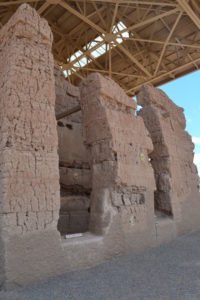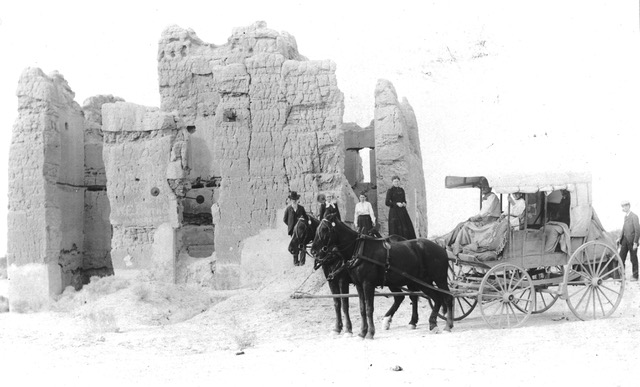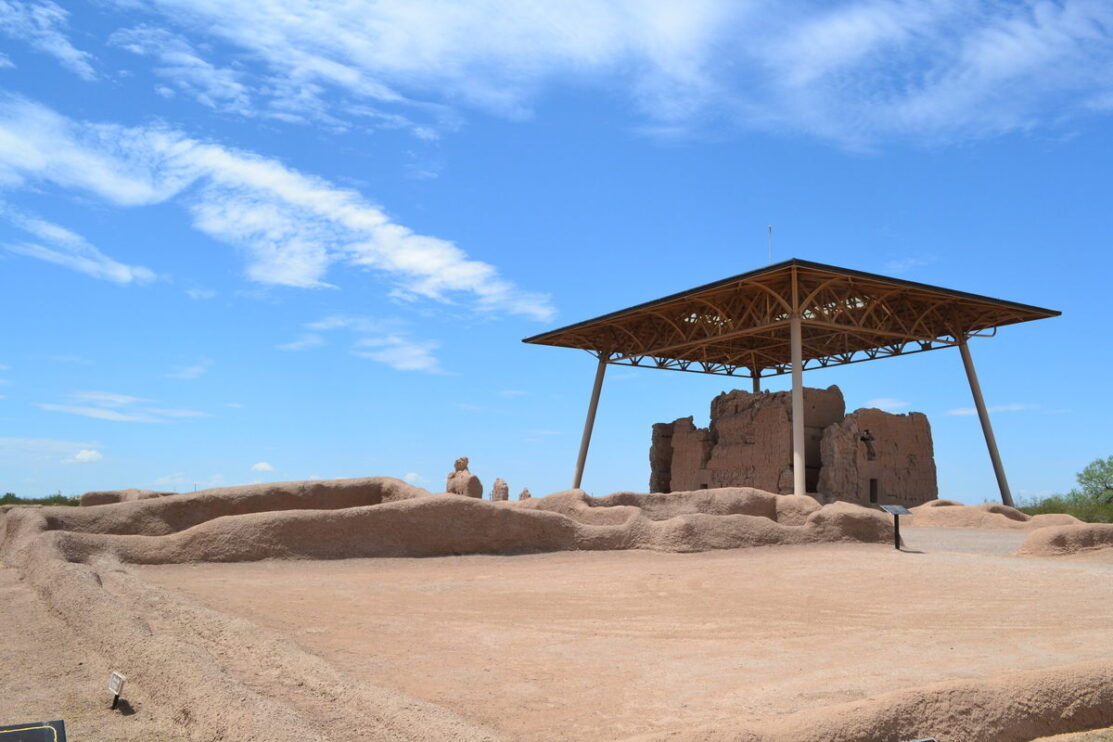More than 650 years ago, a story grew up out of an Arizona desert. In 1350, the Sonoran Desert People constructed a network of community buildings and canals for irrigation or trade transportation from the Gila River. They had lived there many generations before building what we currently see, but what still stands reaches to us through time. Although Casa Grande’s inhabitants abandoned the settlement a mere one hundred years after building it, from our vantage point we can study The Rest of Its Story.

The Sonoran Desert People left no written history behind about their agricultural lifestyle, but the earthen structures reveal complexity and purpose–and hints of how these prehistoric residents lived their daily moments.
The four-story Casa Grande–“Great House”–is one of several structures that make up these ruins in Coolidge, Arizona. From the upper corners of the building’s west side, people could view the summer solstice and the equinoxes. They could even measure the lunar standstill, which is a phenomenon that occurs only every 18.6 years. Like other similar communities, the site also includes a central “ball court,” on which a common ball game was played.
The site began to deteriorate soon after it was abandoned, and an increase in visitors in the second half of the nineteenth century wore on it even further. Westward expansion brought a railway twenty miles away, and a stagecoach route ran directly past Casa Grande, bringing sightseers in abundance.

Before the close of that century, President Benjamin Harrison named the ruins and its surrounding land as the United States’ first prehistoric and cultural preserve. Efforts to maintain this piece of antiquity continue today.
–Featured photo courtesy of Atlas Obscura.

